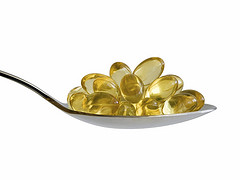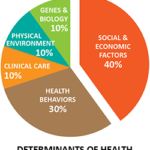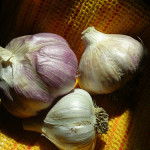Healthy Fats and Oils
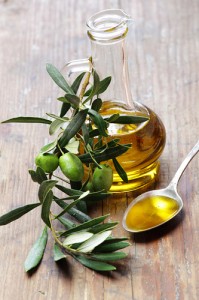 There are many different types of fats. Some should be avoided while others are important for maintaining a well-rounded diet. An essential part of incorporating fats into your meals is discerning between the two.
There are many different types of fats. Some should be avoided while others are important for maintaining a well-rounded diet. An essential part of incorporating fats into your meals is discerning between the two.
Fats are solid or semi-solid at room temperature, while oils are liquid at room temperature. Fats generally come from animal sources while oils generally come from vegetable sources (fruits, vegetables, flowers, nuts and seeds). Fats and oils are referred to as more or less “saturated” (polyunsaturated, monounsaturated and saturated—including hydrogenated and partially hydrogenated), depending upon how often two carbons atoms bond with one another twice in the molecule, making the molecule more fluid and flexible, and consequently, more or less liquid at room temperature.
Healthy Sources of Dietary Fats and Oils
Health-promoting fats and oils should optimally make up 15-20% of your daily calories. The healthiest dietary fats and oils include monounsaturated oils (olive oil), polyunsaturated oils (safflower oil, canola oil, borage oil, primrose oil, avocado oil, walnut oil, sesame oil, flaxseed oil, pumpkin seed oil, soybean oil, etc.) and fish oils that come from fish that live in cold, deep water (halibut, mackerel, sardines, herring, salmon, cod, etc.). These oils are liquid at room temperature and likewise, once their component fatty acids are incorporated into the cell membranes of your body cells, those membranes become more fluid/less rigid as well. Think of the cells lining your arterial walls and how flexible and pliable they should optimally be. This is one of many good reasons for incorporating these healthy oils into your diet.
Fats are not only used for energy, their component fatty acids have numerous, invaluable functions in the body. Some of these fatty acids can be made in the body from other fatty acids and compounds, while other fatty acids must be obtained from the diet because our bodies cannot make them. These are called essential fatty acids (see Essential Fatty Acids handout). That is why the fats we eat are so critically important to health and to why it’s important to remember that all dietary fats are not created equal.
The healthful benefits of these fish and vegetable oils can easily be erased if these oils are not properly stored. These oils are prone to oxidation and break down when exposed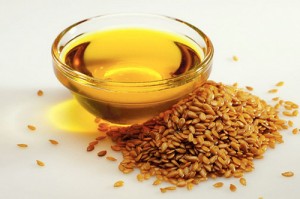 to heat, light and oxygen (air). The oil should have been extracted using the cold-press process. Use olive oil (monounsaturated), avocado, peanut and canola oils to cook with at low to medium temperatures (not to the smoking point). Most of them should not be heated or cooked and they should be stored refrigerated in opaque, closed containers. They should be shelf-dated and used within one or two months of opening. Use these oils by pouring over or adding to already cooked foods or raw foods, as in dressings, etc. The fish oils are obtained by eating the cooked (or raw sushi) fish. The antioxidant Vitamin E (400 I.U.) should be consumed concurrently to prevent oxidation of fatty acids.
to heat, light and oxygen (air). The oil should have been extracted using the cold-press process. Use olive oil (monounsaturated), avocado, peanut and canola oils to cook with at low to medium temperatures (not to the smoking point). Most of them should not be heated or cooked and they should be stored refrigerated in opaque, closed containers. They should be shelf-dated and used within one or two months of opening. Use these oils by pouring over or adding to already cooked foods or raw foods, as in dressings, etc. The fish oils are obtained by eating the cooked (or raw sushi) fish. The antioxidant Vitamin E (400 I.U.) should be consumed concurrently to prevent oxidation of fatty acids.
Fats and Oils To Avoid
The dietary fats and oils that are best avoided include saturated fats and oils, hydrogenated (trans-) fats and oils and partially hydrogenated fats and oils. These compounds are found in animal sources (meats, poultry, dairy), fast foods, processed foods, baked goods, etc. The vegetable oils that are saturated include palm and palm kernel oil, coconut oil, cocoa butter, etc.
Recipes
Basic Flax Oil-Protein Mixture: 3 Tablespoons (40 g) fresh flax seed oil mixed thoroughly with 7 Tablespoons (100 g) baker’s cheese, cottage cheese, yogurt or soft tofu.
Healthy Breakfast: To the Basic Flax Oil-Protein Mixture (above), add a touch of maple syrup or honey, freshly ground nuts and seeds or the Immune Support Breakfast mix (see Immune Support Breakfast Handout) and fresh fruit in season.
Lunch or Dinner: To the Basic Flax Oil-Protein Mixture (above), add finely shredded green onions and parsley, grated carrots, green and red bell peppers, chopped tomatoes and any other fresh vegetables. Season with herbs of your choice.
Healthier Mayonnaise: Set aside a mixture of ½ cup flaxseed oil and ½ cup of the oil of your choice (safflower, canola oil, sunflower oil, olive oil, etc.). Break one egg into the blender, add 2 Tablespoons lemon juice or vinegar, a dash of dry or prepared mustard, a dash of cayenne or ground pepper, and ¼ cup of oil mixture. Blend at low speed until it begins to thicken. Immediately add the remaining ¾ cup oil in a heavy stream as you continue to blend at low speed. Makes 1-1/2 cups. Do not double recipe or mixing problems may ensue. Refrigerate in an opaque, closed container.
Healthier Butter: Mix butter and flaxseed oil in a 1:1 ratio. It softens the butter, adds a delicious flavor and supplies cholesterol-lowering essential fatty acids to the saturated butterfat.
Refrigerate in an opaque, closed container.
Salad Dressings: Mix olive oil and flaxseed oil 1:1.
Ginger Dressing: 3 Tablespoons flaxseed oil, 1-2 Tablespoons fresh lemon juice, 1 teaspoon fresh grated ginger, 1 clove minced garlic. Whisk together and use as a light dressing over lettuce, grains, vegetables, etc. Refrigerate in an opaque, closed container.
Tamari Dressing: ¼ cup flaxseed oil, 2-3 Tablespoons tamari sauce, 2-3 Tablespoons apple cider vinegar, 1-3 cloves minced garlic. Optional: 1-2 teaspoons honey or brown rice syrup. Whisk together and use as a light dressing over any foods. Refrigerate in an opaque, closed container.
Dill Dressing: 1/3 cup minced fresh dill, ¼ cup cider vinegar or lemon juice, 1-1/2 Tablespoons Dijon mustard, ½ teaspoon honey or rice syrup, ½ cup flaxseed oil. Whisk together all ingredients except the flaxseed oil and trickle that in last until the dressing is thick and smooth. Use over fish, grains and vegetables. Refrigerate in an opaque, closed container.
Balch, Phyllis and James. Prescriptions for Nutritional Healing, 3rd edition. 2000. Avery.

